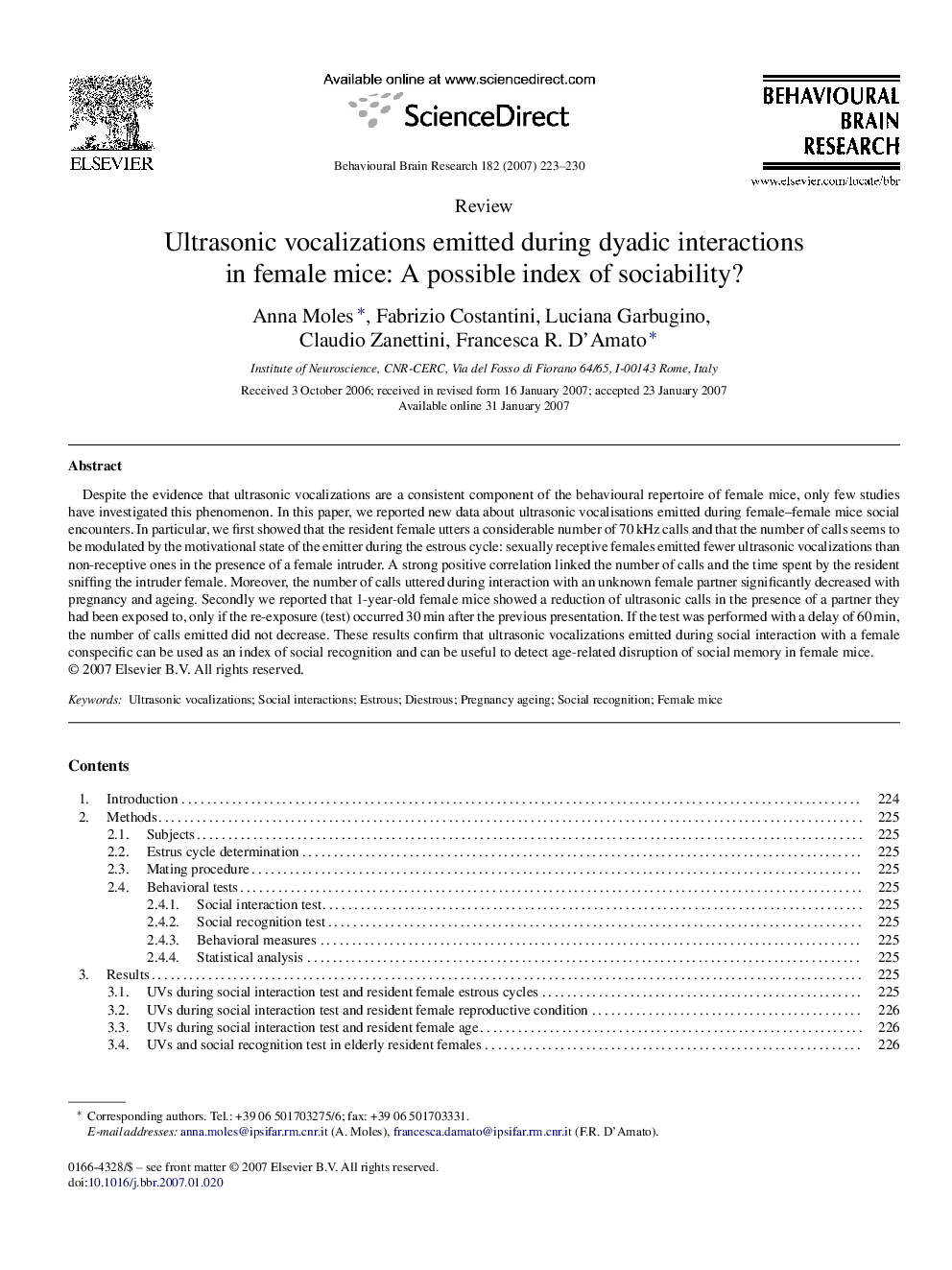| Article ID | Journal | Published Year | Pages | File Type |
|---|---|---|---|---|
| 4315497 | Behavioural Brain Research | 2007 | 8 Pages |
Despite the evidence that ultrasonic vocalizations are a consistent component of the behavioural repertoire of female mice, only few studies have investigated this phenomenon. In this paper, we reported new data about ultrasonic vocalisations emitted during female–female mice social encounters. In particular, we first showed that the resident female utters a considerable number of 70 kHz calls and that the number of calls seems to be modulated by the motivational state of the emitter during the estrous cycle: sexually receptive females emitted fewer ultrasonic vocalizations than non-receptive ones in the presence of a female intruder. A strong positive correlation linked the number of calls and the time spent by the resident sniffing the intruder female. Moreover, the number of calls uttered during interaction with an unknown female partner significantly decreased with pregnancy and ageing. Secondly we reported that 1-year-old female mice showed a reduction of ultrasonic calls in the presence of a partner they had been exposed to, only if the re-exposure (test) occurred 30 min after the previous presentation. If the test was performed with a delay of 60 min, the number of calls emitted did not decrease. These results confirm that ultrasonic vocalizations emitted during social interaction with a female conspecific can be used as an index of social recognition and can be useful to detect age-related disruption of social memory in female mice.
